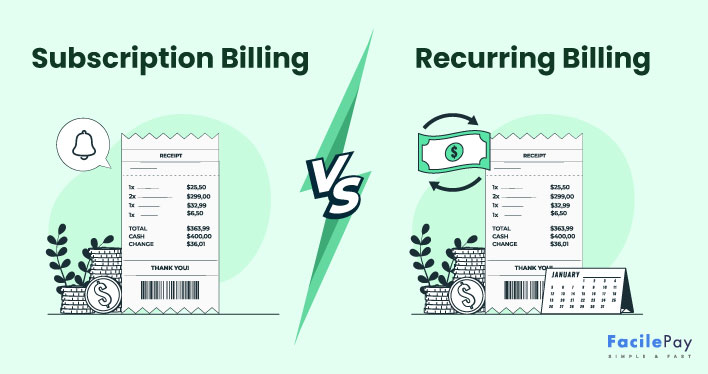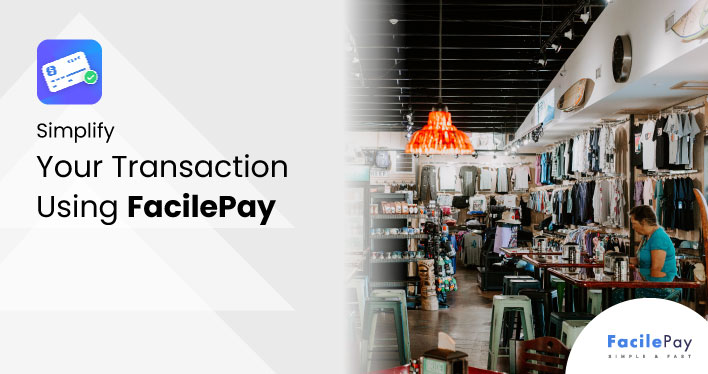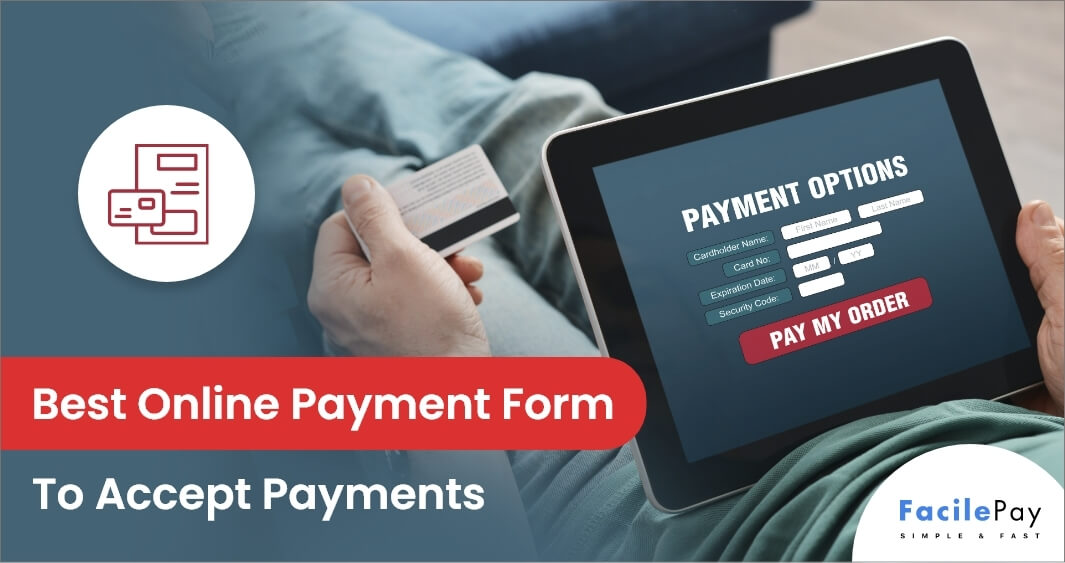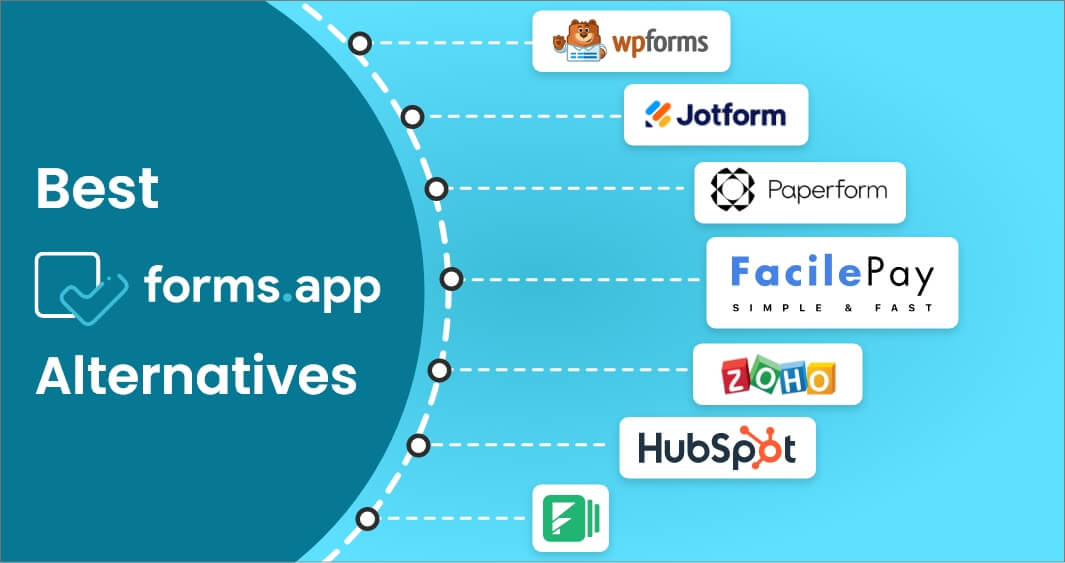Unable to choose between subscription billing and recurring billing?
Getting confused with the related concepts of subscription and recurring billing while deciding on your pricing strategy?
Not surprising. Many businesses having multi-period billing and payment structures are facing the same concern.
Is a subscription a recurring payment?
This question is buzzing around the market among businesses like food and catering, SaaS providers, and fitness providers.
While subscription based model and repeating billing are terms used interchangeably, both have distinct differences in their model that you as a business need to know.
This blog will cover everything related to subscription billing vs recurring billing to help you make an informed decision.
Here are the things you will learn from this blog:
- What are recurring billing and subscription billing? (with examples)
- Mapping the differences between recurring payments and subscription
- Which is the best payment structure for your business?
So, are you ready? Let’s start right away.
Contents
- What is Subscription Billing? (+2 Examples)
- What is Recurring Billing? (+ Example)
- Subscription Billing Vs Recurring Billing: Mapping the 3 Differences Based on Pricing Plans
- Subscription Billing Vs Recurring Billing: 3 Core Differences Based on the Billing Approach
- When to Choose Subscription Billing?
- When to Choose Recurring Billing?
- Which is the Best Between Subscription and Recurring Billing?
- Frequently Asked Questions
- Ready to Get Started with Recurring Billing or Subscription Billing?
What is Subscription Billing? (+2 Examples)
Subscription billing is an automated payment collection system that starts after the customer signs up to access or use a product/service.
The key information areas of subscription systems include the following:
- Subscription Start Date (the date of the first subscription billing)
- Duration or Frequency (how often payments happen or the length of the billing cycle such as 1 month, 3 months, and 12 months)
- Amount to be Charged (the charges for the service/product/feature based on the billing cycle)
Subscription billing is a type of recurring payment model that offers flexible pricing and billing options. In this billing system and payment method, the different offerings of the business are divided into several flexible programs or plans providing custom pricing models to customers. This helps businesses earn more customers and create long relationships.
The plans and programs include free trials, easy upgrades and downgrades of the subscription plan, and more affordable payment solutions.
Examples of Businesses Leveraging Subscription Payment System
-
Amazon Prime
This is probably among the best-known brands leveraging the subscription system of billing mechanism and payments with as many as 40 million subscribers. The subscription program of Amazon Prime is making a difference due to its wide range of features and benefits offered for monthly, quarterly, or annual plans.
For instance, when you subscribe to Amazon Prime for a 1 month or 3-month plan, you get free two days shipping for all kinds of orders, access to unlimited prime movies and videos, access to a lot of prime music, unlimited photo storage, and access to read unlimited books on Kindle.
What more can a customer ask for? It’s enough awesomeness to make the customer think that they are enrolling for a killer deal.
-
Dollar Shave Club
This is yet another brand that has nailed it when it comes to leveraging the subscription business model. Dollar Shave Club has created a subscription program using shaving products and earned the highest customer retention rate among grooming businesses.
They could penetrate the market because of their unique approach and the direct benefits to their customer base. With just a small amount paid every month, customers can get a brand-new razor and shaving swag mailed to their doorstep. Doesn’t that sound great?
Now, let’s understand the concept of recurring billing.
What is Recurring Billing? (+ Example)
A recurring billing model refers to scheduled, periodic, and repeated automated collection of payments from customers for subscription services or products. With this model in place, you collect payments and keep charging customers credit/debit cards at regular intervals for the agreed-upon cost with the help of a payment processor. There are several issues faced in recurring billing but they can be easily managed with an efficient processor or software like Square and FacilePay.
The recurring payment system follows a model that involves customers and merchants engaging in an ongoing relationship. This model does not involve the flexibility like easy cancellations and custom feature plans.
For example:
Customers don’t sign up for the recurring fee paid for utility bills including electricity and water The fee paid for utility services are a part of customers’ daily lifecycle and recurring payments make it feasible for them to manage those transactions monthly or quarterly. Recurring payment truthfully and promptly bills each customer, taking into account the taxes, proration, and missed payments.
The two types of recurring billing systems include the following:
- Fixed Recurring Billing: In this model, a fixed amount is always debited from customers’ bank accounts on every scheduled date for the used products/services.
- Variable Recurring Billing: In this model, the amount to be charged will be usage-based and so vary with each billing cycle.
The majority of subscription businesses fall under the recurring billing system, namely, Dropbox (saas industry), Practo (health & fitness sector), and Udemy (education and e-learning industry).
You may have till now noted several similarities between the two structures and figured out the differences meanwhile.
No more guessing. The below section on subscription billing vs recurring billing will give you a clear idea of the differences. Let’s dive in right away.
Subscription Billing Vs Recurring Billing: Mapping the 3 Differences Based on Multiple Pricing Plans
| S.No | Recurring Billing | Subscription Billing |
|---|---|---|
| 1. |
Usage-based billing Customers are charged based on their service or product usage on a predetermined or fixed schedule. |
Freemiums Free access to a limited set of features are provided to customers signing up with an easy option to upgrade with a paid membership plan with no risks. |
| 2. |
User-based billing Payment cycle is typically based on the number of users accessing a product/service. Example: SaaS products. |
Promotion-to-Subscription Model or Try-Before-You-Buy Model Free access for a limited time period is allowed to customers signing up before they automatically get upgraded to a paid membership plan. Customers will have to pay if they wish to continue using the product/service. |
| 3. |
Tiered billing Customers are billed based on the feature package they choose. The pricing for the feature packages are created on a tier-based format having the need to upgrade to a higher plan for access to more utilities. |
Overage Subscriptions or Hybrid Pricing Customers get access to a set of features with a base fee structure with option to upgrade to higher plans having more benefitting utilities in it. Users can easily upgrade as well as downgrade if the higher plans don’t fit them for the long run. However, the base fee will be constantly charged that includes the basic features. |
Subscription Billing Vs Recurring Billing: 3 Core Differences Based on the Billing Approach
Both subscription billing and recurring billing can be seen crossing each other’s path at various levels. The above definitions, business examples, and pricing structures are a clear walk through to understand their points of intersection. These intersection points often create confusion for businesses when deciding on their pricing strategy. To clear the air, let’s have a precise look into their differences.
- Signing-up for the Feature Usage: In recurring billing, customers don’t necessarily need to sign up for the services like in case of electricity and water. On the other hand, subscription billing requires the customer to sign up for a particular pricing structure for a set of features.
- Flexibility in Billing Process: Subscription billing offers the flexibility to upgrade, downgrade, and even cancel the paid membership plans anytime. On the other hand, recurring billing doesn’t offer much flexibility and is often referred to as payment structure with no deadline or end date like for health insurance plans.
- Approach to Recurring Revenue: Subscription billing model is a structure that aims to penetrate the market with a strategic payment structure. On the other hand, the recurring billing model tries to streamline the revenue cycle and brings convenience and cost-effectiveness.
You can see while both are interlinked, they have distinct qualities making them different in terms of features. Let’s understand in which scenarios you can choose subscription billing.
When to Choose Subscription Billing?
You can choose subscription billing for the product or streaming services of your business, if you want to:
- Penetrate the market with a unique preposition that helps to overcome the prevailing high prices
- Enhance the convenience for customers in terms of the process to make payments as well as a flexible approach with pricing and transaction module
- Strategically boost your scope of revenue by the use of pricing and payments structure such as free trial subscription packages
Therefore, subscription billing works best for businesses that have a product/service with a customizable pricing structure to penetrate the market, boost revenue and profit, and ultimately grow. Since you know about automatic billing, let’s understand when you can choose recurring automated payments for your business.
When to Choose Recurring Billing?
You can choose recurring billing for the product or service of your business, if you want to:
- Streamline the revenue cycle of your business with a predictable and steady cash flow
- Better manage billing and payment cycles
- Create a plan-to-action for churns through efficient monitoring
- Improve the overall process with control over errors
- Cut down on transaction costs
In simple terms, recurring billing is the best choice for businesses that want a more managed billing and payments structure to enhance the accounts-related processes. Configuring recurring payments on Squarespace or WordPress is very easy. You don’t have to spend a lot of time to get started with this payment structure.
Which is the Best Between Subscription and Recurring Billing?
The answer lies in your business model, your existing customers, and what you wanted to achieve with your pricing strategy. There can’t be a one-size-fit-all pricing structure for every business.
When weighing up your options, evaluate your customer expectations, your products/services lifespan such as whether it lasts a month, a year, or forever, and your revenue as well as growth expectation.
Let’s now have some common queries answered on recurring and subscription based billing solution from below.
Frequently Asked Questions
-
Is it possible for a business to incorporate both the pricing structures?
Yes. It is possible for a business to use both the pricing structures. However, as a business you should always make a thorough evaluation on whether your offered services/products blend naturally into both these pricing modules or not.
Key points to make this evaluation are stated below:
- Lifespan of your products/services (whether it lasts for 1 month, 2 months, 3 months, 6 months, 12 months, or forever)
- Features of your products/services (whether your service or product naturally fits recurring or subscription models)
- Revenue & expenditure position (Whether your business needs to have lump sum amounts to manage its expenses or work best with recurring revenue)
-
Which softwares to use for recurring and subscription billing?
There are many softwares in the market that work for subscription and recurring payments. Some of them are mentioned below.
- Square
- FacilePay
- ChargeOver
- Zoho Subscriptions
- Freshbooks
-
Does it take a lot of time to integrate recurring and subscription billing systems?
The time needed to integrate recurring and subscription billing systems depend on the type of software or payment processor used. However, if you are using a payment processor or software mentioned in the above answer, there won’t be much time involved with the integration or set-up.
Ready to Get Started with Different Billing Systems?
In this blog, you have learned about the differences of recurring and subscription billing with a closer look into the ways both the modules intersect at certain points. There are benefits associated with both the models. As a business, it depends on your objectives and how you plan your pricing strategy.
Whether the recurring billing process or the subscription billing system, FacilePay can help you with both the pricing structures. Consider using it to leverage the maximum from these pricing modules.




